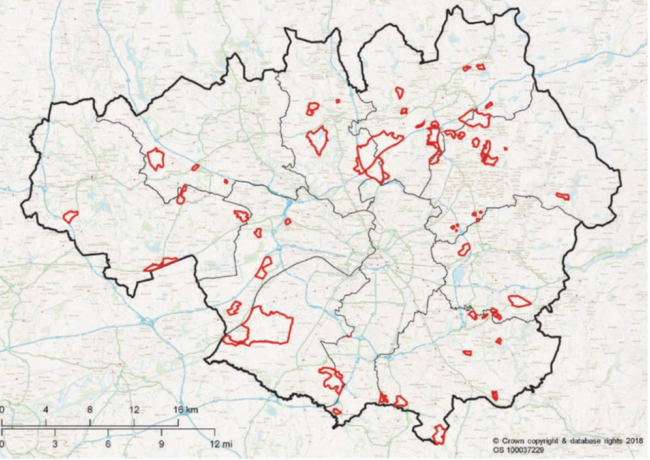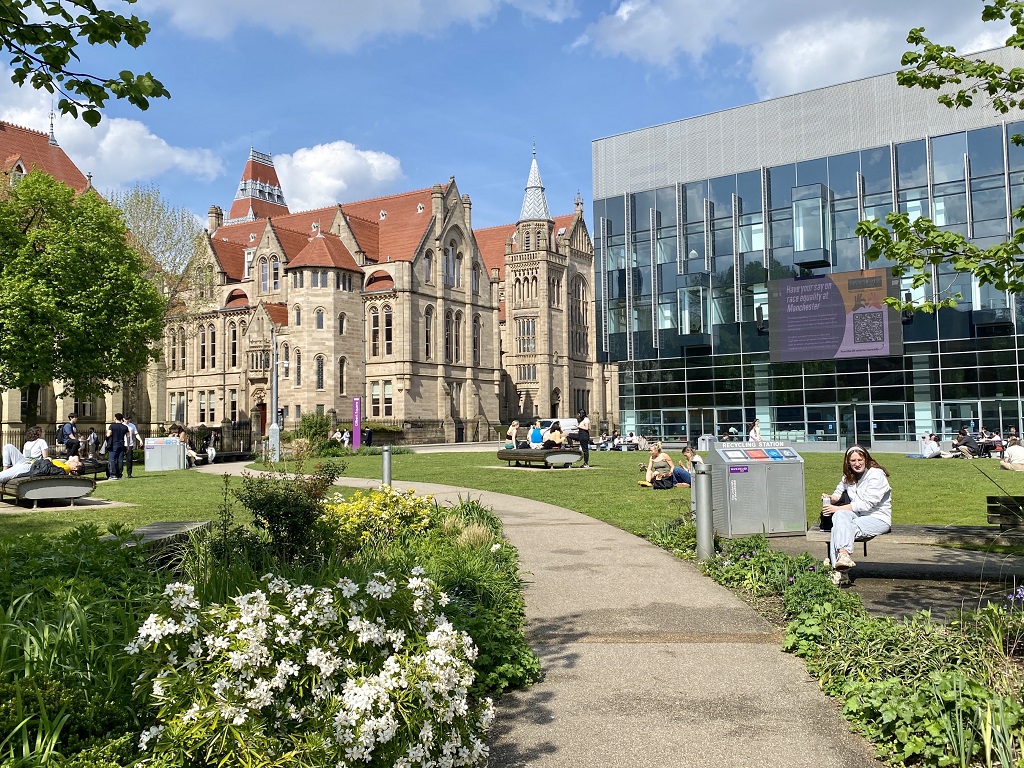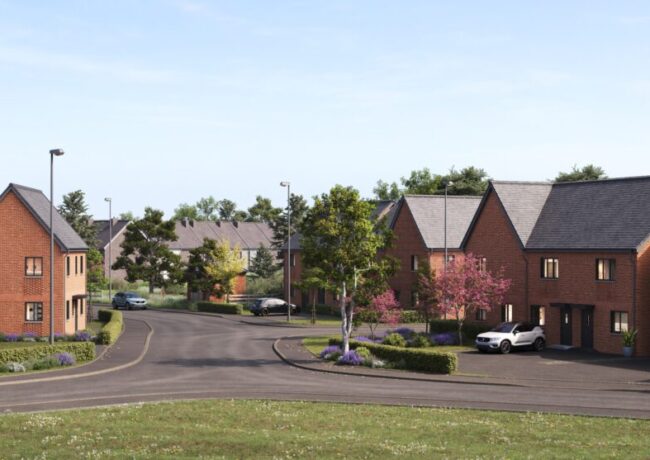GMSF delay confirmed
Another delay to Greater Manchester’s 201,000-home spatial framework has been confirmed by the Combined Authority with another round of public consultation expected in the New Year.
The latest delay rules out any final form of the framework coming forward before next year’s Mayoral elections, taking place in May 2020; the GMCA’s revised timescale points to a further round of public consultation in summer 2020.
The long-awaited draft of the framework was published in January this year, outlining Green Belt release and a plan to build a minimum of 201,000 new homes across Greater Manchester’s 10 boroughs, alongside 65m sq ft of employment space; a consultation on the plans followed soon after.
Place North West reported in July that another delay was looming, and this has now been confirmed by the GMCA, which has said a refreshed timescale will “allow for a period of deeper engagement with local communities and other stakeholders in light of the number of detailed and considered public responses received” earlier this year.
The latest move pushes back the existing timescale for the GMSF; under this, the next version would have come forward this September, before being signed off by all 10 boroughs in October. A consultation would have followed before Christmas, with the framework being sent to the Planning Inspector in spring 2020.
Despite the delay, the GMCA reiterated the existing framework was “the best proposal for implementing future housing and infrastructure needs fairly across the city region”.
Paul Dennett, GMCA lead on housing, homelessness, and infrastructure, said: “The people of Greater Manchester have provided invaluable insight and feedback and I want to thank them for engaging in this important process on our Plan for Homes, Jobs and the Environment. Having a clear plan is vital if we are to avoid a future where developers get the pick of the prime sites across Greater Manchester with no joined-up strategy to combat the possibility.
“I am confident the second, redrafted Spatial Framework was a significant improvement on the first, with proposals for building on Green Belt reduced by more than 50 per cent. However, from the large number of responses we’ve received there obviously remain real concerns in many communities. We received 27,000 responses to the first draft and fewer than 18,000 this time but it remains important that we consider all feedback properly and factor it into the next redraft.
“When the revised proposals are presented for a further round of consultation next summer they will better represent what we all want – a comprehensive proposal for the homes, jobs and supporting environment we all need now and in the future.”
As reported by Place in the summer, it is understood much of the delay hinges on the GMCA’s decision to pursue the spatial framework as a Spatial Development Strategy, which under current legislation does not allow for Green Belt release.
The GMCA had been attempting to convince Whitehall officials to change legislation to allow the GMSF to be able to release Green Belt, despite it being an SDS, but this has been met with push back from Government.
Part of the reason, according to sources close to the process, is that the GMCA is “not confident its evidence base is strong enough” to push on with its housing plan; if pursued as a JDP, more evidence would have to be submitted to Government than under an SDS.
The first draft of the GMSF, published in 2016, set a target of 227,000 homes over the next 20 years, and included the release of 12,100 acres of Green Belt, which was massively unpopular with the public and was spread unevenly across the 10 boroughs. Burnham tapped into this wave of discontent when he campaigned to be Mayor in early 2017, and when he took post in May of that year he commissioned Salford Mayor Paul Dennett to oversee a rewrite.





It’s disgusting developing on our countryside when a lot of people in Greater Manchester are living amongst vast brownfield eyesores.
By Simon
It’s horrendous affect on the poor wildlife , pollution and over populated in every aspect roads schools etc how can they justify the destruction of wildlife
By Maxine jooyandeh
It is imperative that we preserve our green belt for the health and wellbeing of future generations.
Green spaces curb pollution and alleviate climate change. The GMSF has manipulated the figures of green belt loss by adding new sites as green belt which could never be built upon. cemeteries. railway sidings, thus maintaining the overall green belt loss as less than in reality. The Combined Aithority assumed the government would allow the Spatial Strategy to alter the legislation to allow green belt development regardless of all the protests from local residents. The green belt development was a done deal and the consultation a sham. Developers are behind this scheme and have no intention of building on brownfield sites as its less cost effective. Thank you Placenorthwest for exposing this outrage. It is imperative that the government is made aware of the situation and continues to prevent the CA from altering the legislation to suit itself
Thank you to the lobby groups for all their hard work in exposing this scandal and fighting to save our green belt.
By Jackie Harris
Continued and lengthy delays not a good look for GM (and worrying) when asking for further devolution. On the plus side 9000 less responses or a massive one third reduction which shows the revised plan is right.
By Housing for the many
Greenbelt is not ‘countryside’. More often than not it’s scruffy fields that offer little real amenity. Where I do agree with the objectors is that it would be pointless to release this land if it’s just going to fall victim to the same old ugly sprawl, devoid of proper infrastructure and amenities that volume house builders deliver. These sites need to be properly masteplanned, with high design quality baked in, integrated into existing settlements and crucially, served with the roads, transport links, parks, cycle lanes, leisure, retail and social infrastructure that traditional house builders cannot provide. In other words, it should be developed by, or with strict oversight by public bodies.
By GMSF watch
GMSF delayed until after the Mayor’s election me thinks. The reality is that we should build on brownfield sites but building on some greenbelt is inevitable.
By Lenny1968
The combined authority responsible for this should try to get through Woodley/Romiley/Denton during rush hours. The current level of pollution in these areas is so bad it’s putting lives at risk. How many new cases of asthma for example caused by even more gridlocked roads are manchester and stockport councils going to continue trying to justify. Stop building on greenfield sites – they are here to be our green lung – NOT FOR CONCRETING OVER. This is nothing to do with affordable housing, even less to do with homelessness, don’t lie, it’s about back handers. It’s like they’re sitting in offices with a felt tip colouring in every green space they can see. Put the pen down, get out of the office and take a drive round these areas at rush hour then every one of them should ask themselves if they want to live there when it’s all filled in. Or ask their asthmatic kids.
By Collette
Farmland needs to be used productively. Green belt, green field or land simply designated as countryside requires better management than as one comment correctly describes as so much scruffiness. Only the growing of crops with areas set aside for wildlife etc can realistically achieve this; fields are effectively rendered unusable for meaningful purposes by the grazing of livestock and the aesthetic abominations usually attached to the keeping of horses.
By John Deere
More and more delay and non decisions as we get more devolution. Local Mayors will have to play politics to keep their jobs which will obviously be more important than the people. # For the many not the few.
By Bill
To all the people objecting to releasing Green Belt land for development – can I ask you one thing: where do you live, when was your house built? It would have been a green field once and the people living next to it probably complained. Now you have your home but are denying the same opportunity to others. Can you not see this is hypocrisy, plain and simple? The Green Belts were designated in the 1930s and our population has risen considerably since then – we cannot expect cities to still continue to house a growing population without any expansion. The GMSF is doing all it can to build on as much bronwfield land as possible and at high density as possible, but there are many problems with this: its usually contaminated, people generally don’t want to live there – and its not just less profiitable; it can often only be done at a loss. Even if all bronwfield sites were developed it would not be enough land to meet our housing need. Its no wonder that there is a problem in affordability in the housing market. At least some of us are trying to do something about it.
By urbanista
It is a flawed calculation of housing requirements – it is based on a national index times an affordability index which no one seems to know at the council. It is subservient to the construction companies who just want to line their own pockets. There is a need in Trafford for 3300 homes not the 12000 and they should be affordable but can anyone see the building companies taking less than 350000 (more probably) fro the houses. The average price for properties in the region is £294,000 – how can any young couples afford such properties starting out in life. The damage to the carbon holding moss and the new road will impact massively on the air quality in the region which is already saturated with vehicles. The report here says there will be a delay – ahem – they are already building – drive down through Partington !!!!
By Alan
Alan – do you not realise that prices are so high because demand is outstripping supply? Building more houses will reduce prices, its supply and demand economics. There needs to be more affordable homes too, you are right. And developers must be made to build quicker and not control prices by witholding stock. UK average house prices are now 8 times the average salary – banks will only lend you 3.5 times you salary. This is the affordability crisis which is in large part caused by chronic undersupply. Our rate of housebuilding crashed in the 1990s and has never recovered.
By urbanista
The purpose of the green belt was to reserve land around towns for planned stategic develop. This is what the strategic plan is about. Making sure the houses and factory’s we need are built in the most appropriate places.
By Just saying
There is so much land with derelict buildings that haven’t been considered for development . Seems pointless to have protection of Green belt when it can be disregarded on a whim. The loss of wildlife habitat and the potential increase in pollution and congestion is really important to consider.
By Angela
Use all the brownfield sites. Stop going for the easy pickings of the greenbelt we should be protecting. As for new industrial units there are so many to let and for sale where they are talking of expanding.. madness !!!
By Christine
I agree with Urbanista. Everywhere was Greenbelt once. I wonder how these people would react if housing was built near Hattersley and Sholver?Because those estates are in GM’S Greenbelt. I bet they wouldn’t mind if the views from those areas were spoilt.Young families must live on the site of an old wire factory in Gorton. They are not allowed anywhere nice it seems.
By Elephant
Inevitably the demise of our greenbelt despite what we all say will happen, apparently our kids and grand kids wont miss it because they can experience the pleasure on holiday or in the movies. We can only but try and retain what we have by using up as much brownfield sites as possible. The vision of housing estates, roads and schools etc built around say Mam Tor may bring it home to some people.
Greenfields when they are gone they are gone!!
By CBA